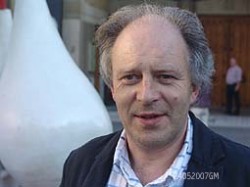
Koldeweij 2016b
“Jerusalem and Other Holy Places As Represented by Jheronimus Bosch” (Jos Koldeweij) 2016
[in: Mariëtte Verhoeven, Lex Bosman, and Hanneke van Asperen (eds.), Monuments & Memory – Christian Cult Buildings and Constructions of the Past – Essays in Honour of Sible de Blaauw. Architectural Crossroads in the History of Architecture – vol. 3, Brepols, Turnhout, 2016, pp. 287-295]
Whereas Bosch drew and painted animals, people, and objects with the utmost precision, and in spite of his assumed acquaintance with exotic buildings in the Near East, he consciously chose not to localize holy places such as Jerusalem, but to depict buildings that were scarcely or completely indefinable and to present unrecognizable views. The events of the New Testament were brought close to the viewer, not only geographically but also chronologically as if the events were taking place in the here and now. The scenes from the lives of saints are a different case, though. In these, the landscape in which the saints are set has the sole purpose of giving greater significance to the chief personage, to illustrate more details of his life, but above all to provide greater depth.
[explicit 15 January 2021]